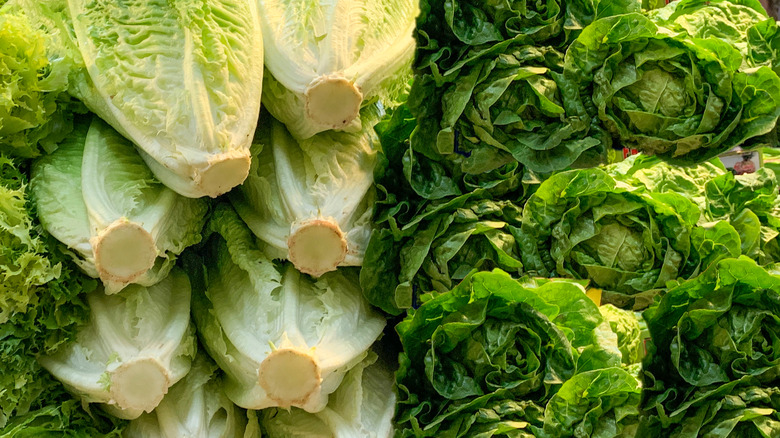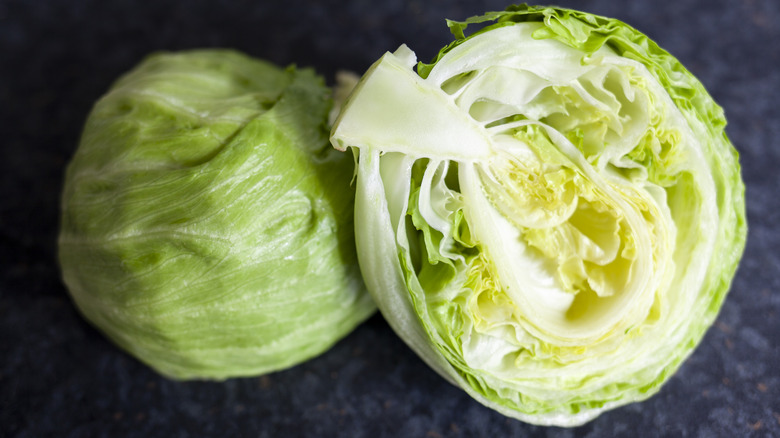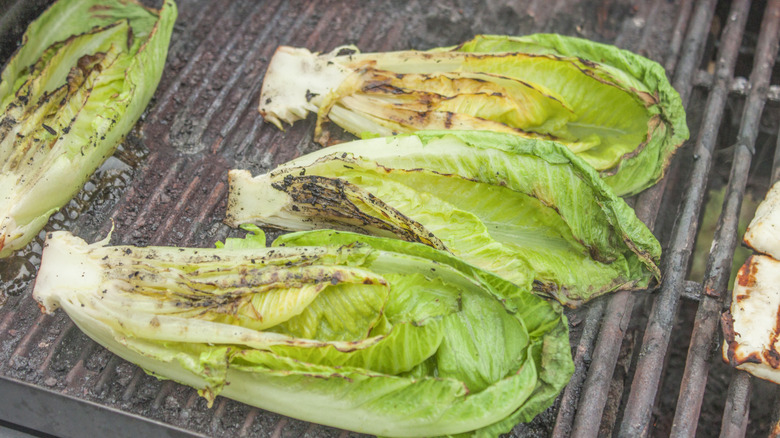The Differences Between Iceberg Vs Romaine Lettuce
It's amazing how many different types of lettuce there are. Just walk down any produce aisle, and you'll be spoiled by all of the choices. However, two of the most popular kinds are iceberg and romaine lettuce. And while they both often appear in salads, these two vary in texture, color, and nutritional value.
The reason the two are so different can be attributed to the fact that iceberg and romaine come from two different varieties of lettuce. Iceberg is a member of the crisphead family of lettuce (of the variety capitata), while romaine is of the longifola variety. Put the two lettuces next to each other and their different sizes and structures make that difference abundantly clear. Beyond their looks, these two lettuce have their own distinct physical properties and flavor profiles. There's a reason why romaine is the star of a Caesar salad and iceberg is the go-to ingredient for a wedge salad.
What is iceberg lettuce?
Iceberg lettuce is perhaps best loved for the distinct crunch it adds to any dish. As previously mentioned, it makes the perfect lettuce for a wedge salad since it is firm and holds its shape well. Its crispness makes it a fresh contrast to other ingredients in a taco, in a sandwich, or on top of a burger. Iceberg lettuce provides more texture than actual flavor, which makes it quite versatile. The reason it is so light in taste is mostly due to its high moisture content. Some may notice it's a bit sweeter than romaine, as well.
While health experts often stress the importance of eating dark leafy greens, this light green lettuce actually has some nutritional benefits that shouldn't be overlooked. It's rich in vitamin K and folate, plus it is a low-calorie food, having only 10 calories per cup. But in a nutritional face-off, iceberg comes in second to romaine because of romaine's higher levels of vitamins.
What is romaine lettuce?
Romaine lettuce offers a greater range of texture compared to iceberg. The darker outer leaves are more tender than those in the center of the vegetable. The roots of the leaves also have a satisfying crunch. Romaine also stands up to heat better than iceberg, making it a great choice for grilling. You can slice the head of romaine into quarters lengthwise and grill them to use them for a tasty twist on a Caesar salad or even try air-frying romaine, too.
Like iceberg, romaine is relatively mild in flavor. However, it has a delicate earthiness that you won't get in a head of iceberg lettuce. Romaine also has more nutrients than iceberg lettuce. A cup of romaine lettuce can give you 20% of your daily recommended intake of vitamin A and a whopping 40% of vitamin K. Additionally, romaine lettuce is considered a good source of folate, providing three times the amount of iceberg lettuce. So while the two are pretty similar in taste and can be used interchangeably, keep these subtle differences in mind when selecting which lettuce to use for your next kitchen creation.


